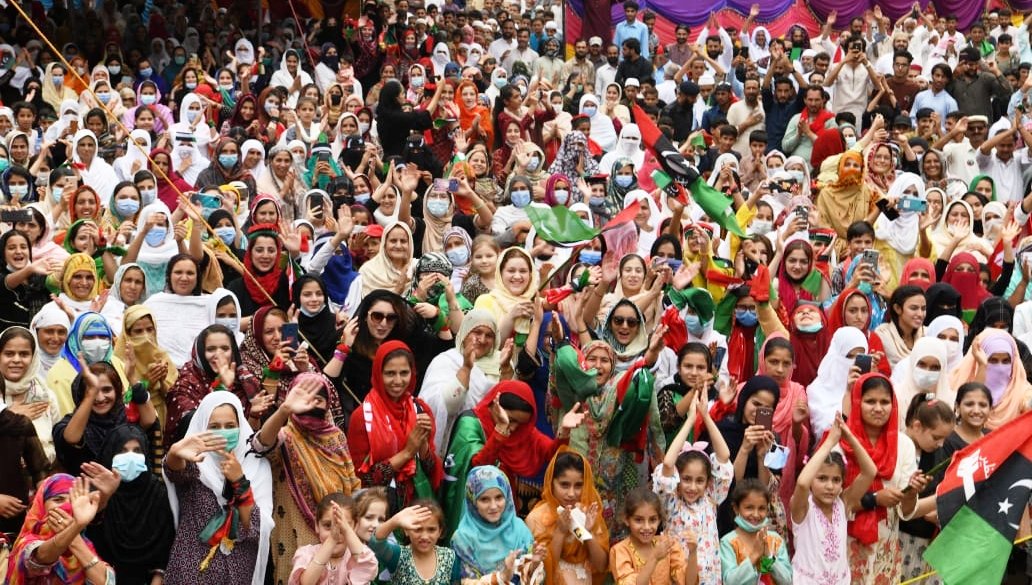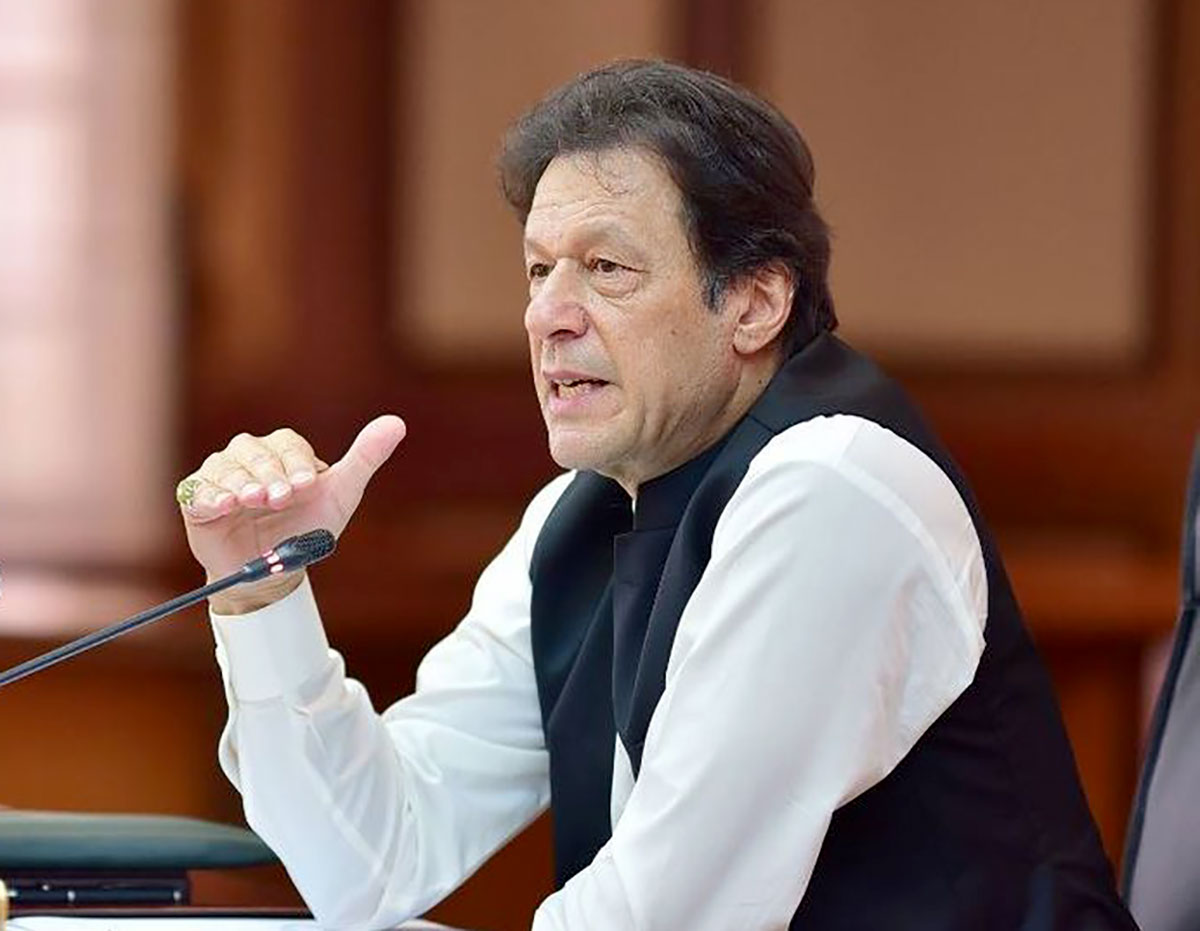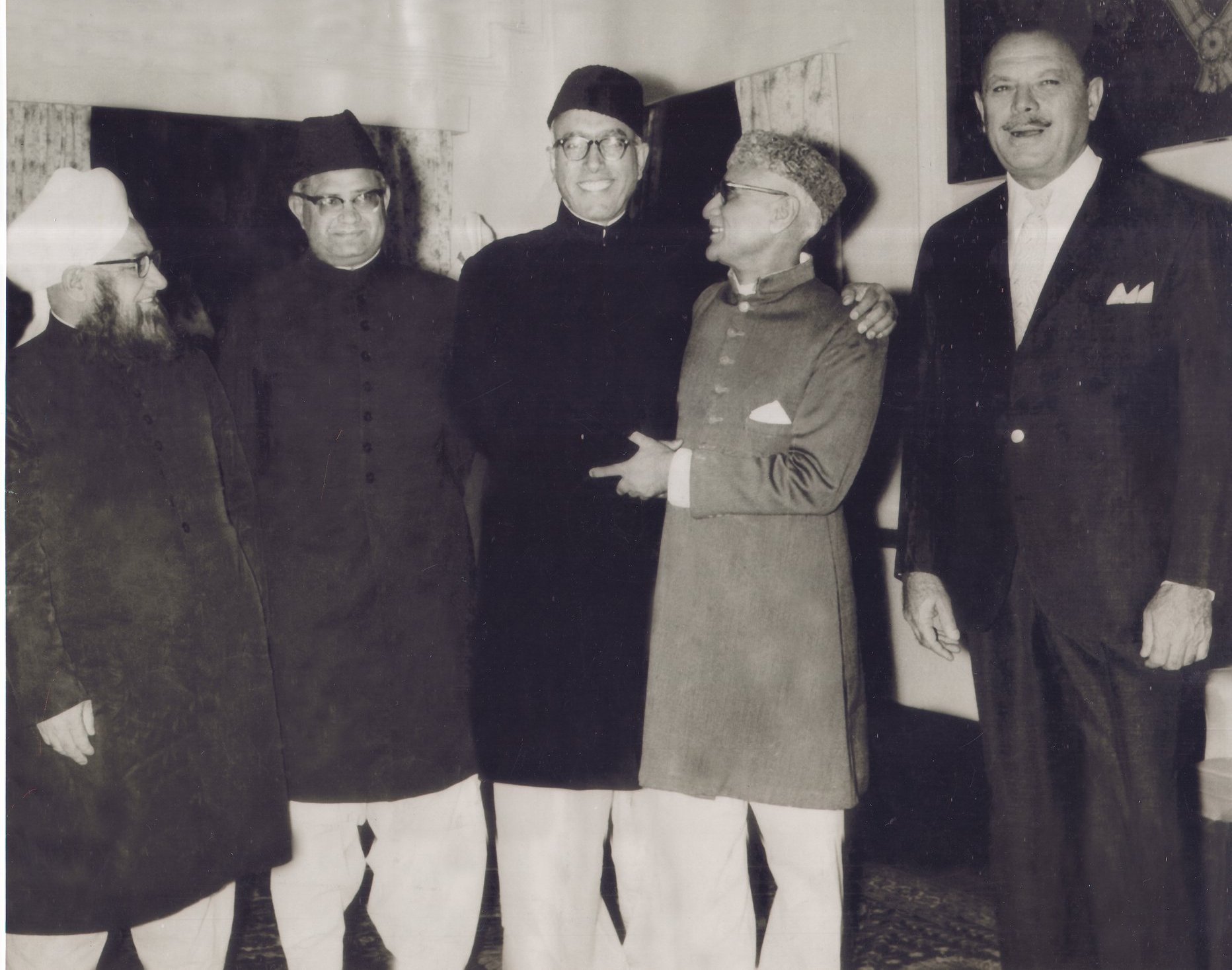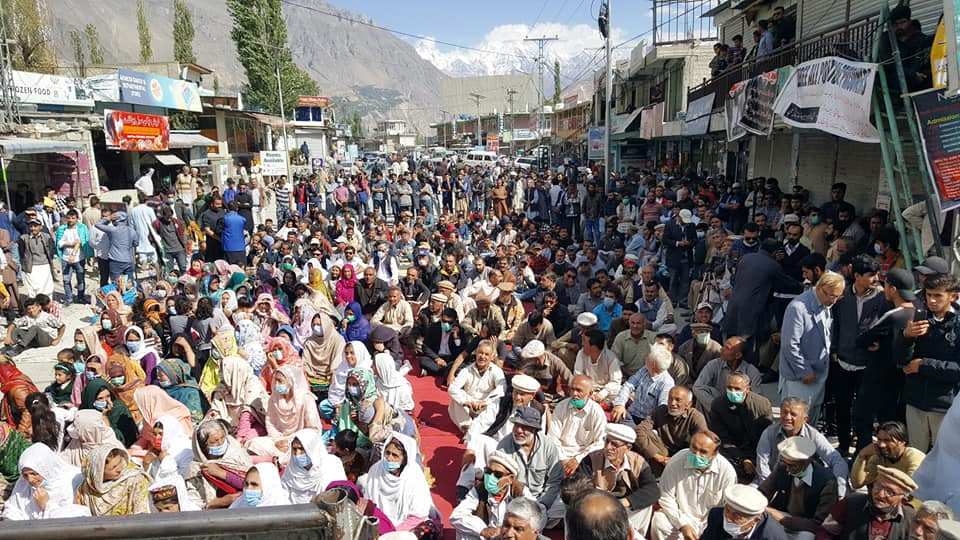The result of the elections on the other side of the Line of Control (LoC) explains the political integration of the region leaving almost no room for any self-rule, reports Tasavur Mushtaq

Repeatedly negating the allegation that his government is keen to make Pakistan administered Kashmir (PaK) as a province of Pakistan, Imran Khan told a receptive crowd in Tral Khal, in Mirpur outskirts, on July 23, that he has other plans in mind.
“But what I want to make clear now, is that in 1948, there were two United Nations Security Council resolutions which granted the people of Kashmir the right to decide their own future,” Geo News quoted Khan saying. Following the UN-mandated referendum, Press Trust of India quoted him saying “his government will hold another referendum to give the people of Kashmir a choice to either live with Pakistan or become an independent state.”
53-Seated Assembly
Two days later, the Kashmir on the other side of the Line of Control (LoC) voted. Two PTI activists were killed in gunfire and by July 26, evening everybody knew that PTI won 26 berths in the 45-seated Muzaffarabad House. PaK’s 53-seat unicameral assembly (representing 3220546 voters) has three different types of berths – 33 seats which are being elected by 10-districts of three divisions (Mirpur, Poonch and Muzaffarabad); 6 seats for 373652 voters of Jammu refugees of 1947 and 1965 and six seats reserved for 29804 Kashmiri refugees (both the categories are spread across the mainland Pakistan) and eight berths, which are filled by nomination (usually by Islamabad ruling party) amongst, women, Muslim scholars, diaspora and technocrats. Now his nominee, Sardar Qayoom Niazi will head the House and rule the territory with 32 of 53 berths.

Whether or not, Khan’s last-minute statement was a factor in PaK polling, the party succeeded in wresting the Muzaffarabad House from the incumbent Pakistan Muslim League (Nawaz) that had 31 berths in the last assembly and whose numbers tumbled to six, this time. It was actually the Pakistan Peoples’ Party (PPP) that surprised everybody as it won 11 seats. PTI had only two seats in the last assembly and only one prior to that.
The bigger surprise was that the local parties were pushed to the corner. The Jammu and Kashmir Muslim Conference (JKMC), the oldest party of an undivided state survived with its president getting elected somehow, along with another member of another local outfit, the Jammu Kashmir Peoples’ Party. MC has only two berths in the last assembly. This infuriated Raja Farooq Haider, the PML-N leader who was the territory’s Prime Minister, to the extent that he shouted that Kashmiris have a “slave mentality”.

An Integrated House
This will be for the first time in history that PTI will be ruling the ‘other Kashmir’. But the larger reality is that while the territory is being projected as autonomous, the political class of the mainland has already integrated the territory. The territory was ruled by PPP four times and PML-N once and now it will be the PTI stronghold. The JKMC that ruled the area four times is reduced to a single digit in a 53-seat house!
It will be also history’s first that the Muzaffarabad House will have only two representatives endemic to the local politics. The rest will be PTI, PPP and the PML-N. The faces will obviously be local but the politics will flow from Islamabad.

Almost every expert believes that the territory follows Islamabad – whoever rules Pakistan, eventually has PaK assembly too. Centre-left, PPP that once toyed with the idea of annexing the territory as a Pakistan province had entered the mountains much earlier. In fact, the first elected assembly that Muslim Conference boycotted in 1975 belonged to PPP. In comparison, the centre-right, PML-N would support JKMC. In 2016, it formally entered the area and that marked literally the end of JKMC. PTI, however, started working in the area from the day it was born.
A Long Story
But the undoing of local political parties is just part of the PaK story. Its self-rule story is interesting but hardly told. In his paper Status of AJK In Political Milieu, native scholar journalist, Ershad Mehmood has detailed the evolution of the constitution and the region’s relationship with Islamabad.
Soon after the territory seceded from Jammu and Kashmir, its ad-hoc system assumed the status of ‘war council’. After India and Pakistan agreed to a ceasefire in 1949, efforts to devise a ruling structure started. It was supposed to be an elected president overseeing the administration. In early 1949, Choudhary Ghulam Abbas, the co-founder of Jammu and Kashmir Muslim Conference (JKMC), who was in jail in Jammu, was repatriated in exchange for prisoners. After reaching Muzaffarabad, he took over the JKMC. In March 1949, the party Working Committee gave him the authority to appoint a President and his ministers and made them accountable to him. A staunch pro-Jinnah man, Pakistan approved the decision.

Abbas represented Jammu Muslims, who had ceased to exist as a source of power (owing to decimation in 1947) but lacked the support from Mirpur and Muzaffarabad. This triggered tensions that eventually led Abbas to get Sardar Ibrahim Khan-led government sacked in May 1950. Quickly, it triggered unrest that followed a linguistic and ethnic divide and pitted natives against the refugees. In order to address this issue, the business rules were changed thrice by the Muzaffarabad administration and Pakistan’s Ministry of Kashmir Affairs and Northern Areas (MKANA) was operational since March 1949. While JKMC retained its control over the nomination of president, MKANA would appoint almost every other person, thus reducing the Muzaffarabad administration to a sort of Municipality that could neither spend one lakh rupees on its own nor appoint a person against a salary beyond Rs 150.

Dictatorship
Ayub Khan seized power in 1958 and in November 1959, he dismissed Sardar Ibrahim Khan Government and appointed K H Khursheed, the Kashmir aide of Mohammad Ali Jinnah, as the president. By early 1961, he extended the Basic Democracies Act to PaK that led to the election of the first ‘elected president’. He was elected by 1200 local body representatives who had been elected directly. This could happen only after the squabbling two leaders (Choudhary Abbas and Sardar Ibrahim Khan) were disqualified from a contest. Khursheed’s rule strengthened MKANA further.
Finally, three top leaders of PaK launched an agitation on August 5, 1968, against the all-powerful MKANA. It got huge support from mainland Pakistan. In 1969, a retired army general, Abdul Hamid Khan, was appointed Kashmir Affairs Minister and he did the spadework for getting the basic democracy to the region. In 1970, the first election was held in PaK on basis of an adult franchise and a 25-member House was formed.
New Constitution
In 1973, Pakistan adopted a new constitution that was parliamentary in nature. It coincided with the relationship between Islamabad and Muzaffarabad being redefined. MKANA was done away with and 11-member Council (with six members from Muzaffarabad House) was set up with Pakistan Prime Minister as its Chairman and the PaK president as its Vice-Chairman.
The Council, however, retained a basket of 52 subjects including media, currency, foreign affairs, banking, minerals required for nuclear energy, curriculum, taxes, tourism, customs and many other things. All fiscal devolutions from Islamabad have pre-mentioned end-use and the Muzaffarabad administration can spend whatever it raises within the territory. The appointment of judges and all top officers fall in the jurisdiction of the Council.

The 1974 arrangement continues to date with no major shift. This is in addition to the authority that the PaK Constitution offers to the federal government. Islamabad can dismiss the Muzaffarabad government under Article 53 and it bars people from preaching against accession to Pakistan under sections seven and five. Routinely, Islamabad appoints four officers – the Chief Secretary, Finance Secretary, Inspector General of Police (IGP) and Accountant General, who control the system, though operating mostly from Islamabad. Ironically, no local officer can be promoted to these “sacred” positions. Since most of the territory is a border, the security grid has its say.
This all is despite the region has an entire basket of symbolic sovereignty – a constitution, a flag, a President and the Prime Minister.
The GB Status
What is interesting is that the PaK is being managed independent of the so-called Northern Areas, now officially known as Gilgit Baltistan, the territory through which the Karakorum Highway passes. The belt is part of the erstwhile state of Jammu and Kashmir and like Poonch, has risen in revolt against Maharaja Hari Singh in 1947 and seceded successfully.

As early as March 1993, the High Court in Muzafarabad has ruled that it is part of the erstwhile Kashmir state and directed the Muzaffarabad government to take control of it. In the last few years, the belt has been in news quite often. Islamabad has evolved a system of its management but is not interested in any way to make it part of the PaK. Islamabad does consider it a part of the erstwhile Kashmir state but loves to manage it independent of PaK.
Interestingly, Imran Khan’s PTI is ruling the GB assembly as well. Before seeking a mandate from the people of the region – now the busiest tourist spot in the region (it got 700 thousand tourists in 90 days, this summer); Khan had announced that it will be annexed as the fifth province of Pakistan. If reports appearing in the media are to be taken at face value, the process of GB annexation is in the pipeline.















